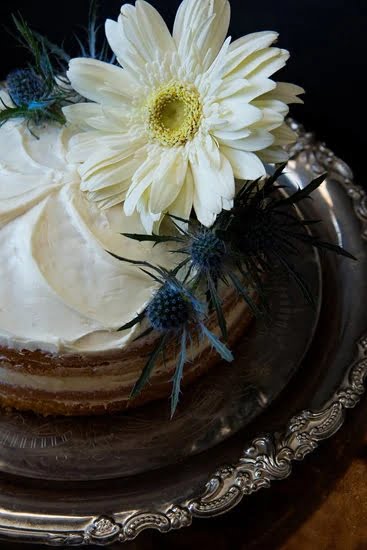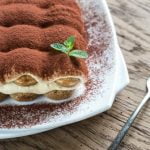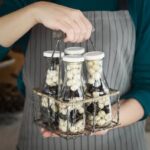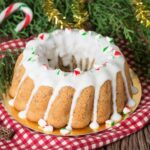Decorating cakes like a professional can elevate any pastry creation from ordinary to extraordinary. Whether it’s a birthday celebration, wedding reception, or simply a Monday night treat, beautifully decorated cakes have the power to captivate and amaze. With the right tools, techniques, and a dash of creativity, you too can create showstopping cakes that will leave your friends and loved ones in awe.
But why go through the effort of decorating cakes? The answer is simple: it’s all about making a statement. A carefully crafted cake design can be the centerpiece of any event, giving it that extra touch of elegance and sophistication. Decorating allows you to unleash your artistic side and showcase your skills in the kitchen.
In this article, we will guide you through the process of decorating cakes like a professional. We’ll start by covering the basic tools and ingredients you’ll need to get started, ensuring you have everything necessary for success. Then, we’ll dive into the step-by-step process of preparing and leveling cake layers, creating a solid foundation for your decorating endeavors.
From there, we’ll explore secret techniques for achieving a flawless finish on your cakes, as well as different frosting techniques that can add beautiful texture and depth. You’ll learn tips and tricks for creating eye-catching decorations and discover how to customize your cakes with edible images and fondant decorations. We’ll even delve into advanced techniques to help unleash your creativity and provide inspiration for professional-looking designs.
So if you’re ready to take your cake decorating skills to new heights, join us on this journey of mastering the art of cake decoration. Get ready to amaze yourself and wow your guests with expertly decorated cakes that are sure to steal the show.
Understanding the Basics
Decorating cakes like a professional starts with understanding the basics, including the must-have tools and ingredients for creating stunning designs. Whether you’re a beginner or an experienced baker looking to up your cake decorating game, having the right tools and ingredients is essential. Here are some key essentials that every aspiring cake decorator should have in their arsenal:
Tools
- Offset spatula: This angled spatula is perfect for spreading frosting evenly and smoothly on cake layers.
- Piping bags and tips: Invest in a variety of piping bags and tips to create different frosting designs, from simple borders to intricate flowers.
- Turntable: A turntable will make it easier for you to rotate the cake as you frost and decorate it, allowing for better control over your designs.
- Cake leveller: This tool helps ensure that your cake layers are level and even before stacking them, resulting in a more polished final presentation.
- Bench scraper: Use a bench scraper to smooth out the sides of your frosted cake, creating clean edges.
- Cake decorating brushes: Brushes are handy for adding details to your designs with food coloring or painting on edible metallic accents.
Ingredients
- Buttercream frosting: Buttercream is one of the most versatile frostings, used for both filling and coating cakes. Make sure you have a good recipe on hand or try experimenting with different flavors such as chocolate or strawberry.
- Fondant: Fondant is a pliable icing that can be rolled out and used to cover cakes for a smooth, professional finish. It also allows for easy sculpting of decorations like flowers or shapes.
- Gel food coloring: Gel-based food colors are preferred by professionals because they provide vibrant hues without altering the consistency of frostings or batters.
- Edible glitter or luster dusts: These shimmering powders add sparkle and shine to your cake decorations, making them look extra glamorous.
- Piping gel: Piping gel is useful for creating glossy effects on cakes, such as water or glass-like decorations.
By having these essential tools and ingredients in your kitchen, you’ll be well equipped to embark on your cake decorating journey. As you gain more experience, you can expand your collection and experiment with different techniques and designs. Remember, practice makes perfect, so don’t be afraid to get creative and have fun with it.
Mastering the Foundation
Preparing and leveling your cake layers is an essential step in cake decorating. It ensures that your cakes are baked evenly, providing a sturdy foundation for your creative designs. In this section, we will guide you through the step-by-step process of preparing and leveling your cake layers like a professional.
Gather Your Tools
Before you begin, make sure you have the necessary tools on hand. These include a serrated knife or cake leveler, a turntable, a ruler or measuring tape, and a cake board or plate to place your cake on. Having these tools readily available will help make the process smoother and more efficient.
Prepare Your Cake Layers
Start by allowing your cakes to cool completely after baking. This is important as warm cakes can crumble easily and be difficult to work with. Once cooled, remove the cakes from their pans using a butter knife or offset spatula.
Next, if necessary, level the tops of your cake layers. A leveled top will ensure even stacking and prevent any lopsidedness in your final decorated cake. Place the first layer on a flat surface and use a serrated knife or cake leveler to trim off the domed part of the cake until it is flat.
Create Even Layers
After leveling the top of each layer, it’s time to create even layers for stacking. Using a ruler or measuring tape, measure the height of each layer. If they are uneven, carefully slice off excess from the taller layers until all layers are of equal height.
To do this, gently hold one hand on top of the layer while using a serrated knife to cut horizontally through it. Rotate the turntable as you slice through so that you create an even cut all around.
By taking the time to properly prepare and level your cake layers, you are setting yourself up for success in achieving an aesthetically pleasing and structurally sound final product. With a sturdy foundation, you can move on to the next steps in decorating your cake like a true professional.
From Crumb Coat to Smooth Perfection
Achieving a professional cake finish is essential in creating visually stunning and polished cakes. The secret techniques outlined below will guide you in mastering the art of creating smooth perfection in your cake decorations.
The Importance of a Crumb Coat
Before diving into the steps for achieving a smooth cake finish, it’s crucial to understand the importance of a crumb coat. A crumb coat is a thin layer of frosting applied to the cake after it has been leveled and stacked.
Its primary purpose is to seal in any loose crumbs on the surface, ensuring that they do not mix with the final layer of frosting. This step not only creates a clean canvas for decorating but also makes it easier to achieve that flawless finish.
To apply a crumb coat smoothly, start by using an offset spatula to add a thin layer of frosting all over the cake’s surface. It doesn’t have to be perfect at this stage; just make sure all the visible crumbs are covered. Once you’ve applied the crumb coat, refrigerate the cake for about 15 minutes or until the frosting sets slightly. This will prevent crumbs from being pulled up when you apply the final layer of frosting.
Secret Techniques for Achieving Smooth Perfection
Now that you have your crumb coat in place, let’s dive into some secret techniques to achieve that coveted smooth finish.
- The Viva Paper Towel Method: Start by attaching a plain Viva-brand paper towel piece onto your hand or a fondant smoother using clear tape. Gently press and smooth against the frosting, working your way around each tier until you achieve that smooth and even appearance.
- The Bench Scraper Technique: Another popular method is using a bench scraper or large icing smoother tool. Hold it against the side of your cake at an angle with one hand while turning your turntable with another hand simultaneously to create an even layer of frosting. Keep rotating the turntable and scraping off excess frosting until you achieve a smooth finish.
- Hot Water Method: For those struggling with smooth edges, briefly dipping your spatula or bench scraper in hot water can do wonders. The heat from the water helps to melt the frosting slightly, making it easier to smooth out any imperfections.
Remember, practice makes perfect, so don’t be discouraged if you don’t achieve a flawless finish right away. With time and patience, you’ll become more proficient in creating beautifully smoothed cakes that look like they were made by a professional pastry chef.
Taking It to the Next Level
Frosting is an essential component in cake decorating as it adds flavor, texture, and visual appeal to the finished product. While a basic buttercream can be delicious and versatile, there are various frosting techniques that can take your cakes to the next level. In this section, we will explore different frosting techniques that professional bakers use to create beautiful and textured cakes.
Piping Techniques
Piping is one of the most popular techniques in cake decorating as it allows for intricate designs and creative patterns. There are several types of piping tips available, each creating a unique effect. For example, a round tip is perfect for creating dots or writing, while a star tip can produce beautiful rosettes or shells.
To get started with piping, it is important to have a set of piping bags and various tips. Practice on parchment paper before moving onto your cake to gain more control over your technique.
Spatula Techniques
If you prefer a smoother look for your cake but still want texture, spatula techniques are worth exploring. One popular method is the “spatula swipe” technique. Start by applying a thin layer of buttercream on the sides of your cake using an offset spatula. Then, holding the spatula at an angle against the side of the cake, swipe up towards the top while simultaneously turning the turntable. This creates a beautiful textured effect that resembles tree bark or waves.
Stencil Techniques
For those who want to add intricate designs without requiring advanced piping skills, stencil techniques are an excellent option. Stencils come in various shapes and patterns, allowing you to create stunning designs such as lacework or floral motifs on your cakes.
Simply secure the stencil onto the cake with toothpicks or tape and apply royal icing or colored powdered sugar through the stencil using a sifter or a small sieve. Carefully remove the stencil, and you will be left with a professional-looking design.
By exploring these different frosting techniques, you can elevate your cake decorating skills and create beautiful and textured cakes that are sure to impress. Whether you want to experiment with piping, spatula techniques, or stenciling, practice and patience will be key in achieving professional results. Remember to select the right tools for each technique and allow yourself to unleash your creativity as you experiment with different designs and finishes.
Showstopping Designs
Decorating a cake is more than just slathering frosting on top. It’s an art form that allows you to express your creativity and create eye-catching designs that will leave your guests in awe. In this section, we will explore some valuable tips and tricks to help you take your cake decorations to the next level.
One of the keys to creating showstopping designs is mastering the art of piping. Piping involves using a pastry bag and different tips to create intricate patterns or shapes with icing or frosting. Here are some tips for successful piping:
- Start with the right consistency: Different designs require different consistencies of frosting or icing. For detailed work, use a firmer consistency, while for smoother surfaces, a softer consistency works best.
- Practice your technique: Before attempting complex designs, practice basic piping techniques, such as making rosettes, shells, dots, or lines. This will help you build confidence and develop consistent control over your piping.
- Use stencils or templates: If you’re not confident in freehand piping, consider using stencils or templates. These tools can help guide your hand and ensure precise designs on your cakes.
Another way to elevate your cake decorations is by incorporating different textures and finishes. Consider trying these techniques:
- Faux bois: This technique mimics wood grain patterns by using a comb-like tool to create lines in the icing resembling wood grain.
- Ruffles: Create beautiful ruffled designs by using a petal tip and making small zigzag motions along the edge of the cake.
- Ombre: Gradually blend two or more colors together to create an ombre effect on your cake.
- Edible lace: Use edible lace sheets or molds to add intricate lace patterns to your cakes for an elegant touch.
Remember, practice makes perfect when it comes to cake decorations. Don’t be afraid to experiment with different techniques and designs until you find what works best for you. With time and patience, you’ll be able to create truly showstopping cake decorations that will impress everyone who lays eyes on them.
Adding a Personal Touch
Decorating a cake is not only about making it look visually appealing, but it’s also an opportunity to add a personal touch that can make the cake truly special. One popular way to customize cakes is by using edible images and fondant decorations. These techniques allow you to transform a plain cake into a work of art that is unique to the occasion or person.
Edible Images
One of the easiest ways to personalize a cake is by adding an edible image. Edible images are made by printing designs onto edible paper using food-grade ink. These images can feature anything from photographs to logos and can be easily applied to the surface of a cake.
To use an edible image, start by selecting the desired design or photograph. You can either purchase pre-made edible images from specialty stores or have one custom-made with your own design. Once you have the image, carefully cut it out using sharp scissors. If needed, you may need to trim any excess white space around the design.
Next, prepare your frosted cake for the edible image by ensuring that its surface is clean and smooth. Gently place the image on top of the frosting and lightly press down, starting from the center and working your way towards the edges, being careful not to tear or wrinkle the image. Smooth out any air bubbles or wrinkles with a clean, dry fingertip or a small roller designed specifically for applying edible images.
Fondant Decorations
Fondant is a pliable icing-like substance that can be rolled out thinly and used to cover cakes or create decorative elements such as flowers, figures, and patterns. Fondant decorations add an elegant and professional touch to cakes and offer endless possibilities for customization.
To use fondant decorations on your cakes, start by rolling out fondant on a clean surface dusted with powdered sugar or cornstarch until it’s about 1/4 inch thick. Use fondant cutters or a sharp knife to cut out desired shapes or designs. You can create things like flowers, bows, numbers, or letters depending on your theme. Be creative and experiment with different shapes and colors.
Once you have your fondant decorations ready, adhere them to the cake by brushing a small amount of water or edible glue onto the surface where you want to place them. Gently press the decoration onto the cake, making sure it sticks properly. If necessary, use additional support such as toothpicks or dowels for larger and heavier decorations.
By adding edible images and fondant decorations to your cakes, you can truly make them one-of-a-kind masterpieces. Whether it’s a birthday cake adorned with a favorite character or an elegant wedding cake with intricate fondant designs, these customizable techniques will surely impress your guests and create lasting memories. So let your imagination run wild and have fun personalizing your cakes.
Unleashing Your Creativity
When it comes to cake decorating, the possibilities are endless. Once you have mastered the basics, it’s time to unleash your creativity and take your cake decorating skills to the next level. In this section, we will explore advanced techniques and design inspiration that will help you create professional-looking cakes that are sure to impress.
One advanced technique that can elevate your cake designs is piping. Piping involves using a pastry bag fitted with various tips to create intricate designs on your cakes. From delicate borders and elegant filigree patterns to bold buttercream flowers and whimsical shapes, piping allows you to add unique and eye-catching details to your creations.
Another way to unleash your creativity is by experimenting with different textures and finishes. For example, you can try using a comb or scraper tool to create smooth or textured finishes on your frosting. You can also use stencils to create patterns or motifs on your cakes.
Design inspiration is another important aspect of advanced cake decorating. Drawing inspiration from various sources such as nature, fashion, art, or even everyday objects can help you come up with unique and innovative cake designs. Keeping up with current trends in the baking industry can also give you ideas for new techniques or styles to try.
| Technique/Inspiration | Description |
|---|---|
| Geode Cake | A design inspired by natural gemstones, achieved by using sugar crystals or rock candy. |
| Ruffle Cake | A technique that involves creating beautiful ruffled layers of frosting on the sides of the cake using a piping bag and petal tip. |
| Watercolor Cake | A design inspired by watercolor paintings, achieved by blending different shades of icing to create a soft and dreamy effect. |
Remember, don’t be afraid to experiment and step out of your comfort zone when it comes to advanced cake decorating. With practice and creativity, you can create stunning cakes that are truly works of art.
Troubleshooting Common Cake Decorating Challenges
Decorating cakes can be a fun and creative endeavor, but it’s not always smooth sailing. There are bound to be imperfections and mistakes along the way. But fear not. In this section, we will provide you with some helpful tips and tricks for troubleshooting common cake decorating challenges so that you can fix those imperfections and turn your cake into a masterpiece.
One common challenge in cake decorating is achieving a smooth finish. If you find that your frosting is uneven or has air bubbles, there are a few things you can do to fix it. First, make sure your cake is completely cool before applying the frosting.
Warm cakes can cause the frosting to melt and become lumpy. Secondly, try using a bench scraper or spatula to smooth out any uneven spots. If air bubbles appear, gently tap the side of the cake with a spatula to release them.
Another challenge that often arises is icing consistency. Sometimes the icing may be too thin or too thick, making it difficult to work with. If your icing is too thin, add more powdered sugar until it reaches the desired consistency.
On the other hand, if your icing is too thick, you can gradually add small amounts of liquid (such as milk or water) until it becomes easier to spread. It’s important to make adjustments slowly to avoid over-compensating and ending up with an unusable icing.
Lastly, let’s talk about cake leveling mishaps. It’s not uncommon for cakes to come out slightly uneven after baking. To fix this issue, use a serrated knife or a cake leveler to trim off any excess from the top of each layer until they are even. If you accidentally cut too much off, don’t panic. You can fill in the gaps with extra frosting or even out the layers by adding more filling.
These are just a few examples of common cake decorating challenges and how to troubleshoot them. Remember that practice makes perfect, and don’t be discouraged if your first attempts don’t turn out exactly as planned. With time and experience, you’ll become more confident in your cake decorating skills and be able to fix any imperfections that arise.
| Troubleshooting Challenge | Fix/Tip |
|---|---|
| Achieving a smooth finish | – Make sure the cake is completely cool before frosting – Use a bench scraper or spatula to smooth uneven spots – Tap the side of the cake gently to release air bubbles |
| Icing consistency | – Add more powdered sugar for thin icing – Gradually add liquid (such as milk or water) for thick icing, making adjustments slowly |
| Cake leveling mishaps | – Trim excess from each layer with a serrated knife or cake leveler – Fill gaps with extra frosting or even out layers with more filling |
WOW Your Guests
When it comes to presenting and decorating cakes like a professional, attention to detail is key. Here are some tips and tricks that will help you create stunning cake displays that will leave your guests in awe.
- Choose the Right Cake Stand: The cake stand you choose can greatly enhance the overall presentation of your cake. Opt for a stand that complements the theme or style of your cake. For elegant and formal occasions, a tiered stand can add height and grandeur to your display. On the other hand, a rustic wooden stand can add a charming touch to a more casual gathering.
- Get Creative with Cake Toppers: Adding a cake topper not only adds personality to your creation but also elevates its visual appeal. From simple monogram initials to elaborate figurines, there are endless options available in stores or online. Alternatively, you can also make your own custom cake topper using materials like paper, clay, or even fresh flowers.
- Use Fresh Flowers as Decorations: One of the easiest ways to instantly elevate the look of any cake is by adding fresh flowers as decorations. Choose flowers that are safe for consumption such as roses, violets, pansies, and marigolds. Make sure to properly wash them before placing them on the cake and remove any non-edible parts like stems or thorns before use.
| Tips for Presenting and Decorating Cakes Like a Pro |
|---|
| Choose the Right Cake Stand |
| Get Creative with Cake Toppers |
| Use Fresh Flowers as Decorations |
By following these tips, you can create a cake display that not only looks stunning but also reflects your unique style and creativity. Remember, presentation is just as important as taste when it comes to wowing your guests with your cake decorating skills. So go ahead, unleash your imagination and impress everyone with your professional-looking cakes.
Conclusion
In conclusion, the art of cake decorating is an exciting and rewarding journey that anyone can embark on. From understanding the basics to exploring advanced techniques, this article has provided a comprehensive guide on how to decorate cakes like a professional. With the right tools, ingredients, and knowledge, you can create showstopping designs and impress your guests with beautifully decorated cakes.
Throughout this article, we have learned the importance of mastering the foundation by preparing and leveling cake layers. We have also discovered secret techniques for achieving a smooth and professional finish, as well as explored different frosting techniques for texture and visual appeal. Additionally, we have gained insights on creating eye-catching decorations using edible images and fondant.
Furthermore, this article has addressed common challenges in cake decorating and provided troubleshooting tips to fix imperfections and mistakes. By following these guidelines, you can overcome obstacles and continue improving your skills. Finally, we discussed tips for presenting and decorating cakes like a pro to make a lasting impression.
As you start your journey into the world of cake decorating, remember that practice makes perfect. Don’t be afraid to experiment with new techniques and designs, unleash your creativity, and seek inspiration from various sources. Most importantly, enjoy the process. Embrace the joy of making edible art that not only tastes delicious but also wows everyone who sees it.
With dedication, patience, and passion for perfection, you will soon be able to decorate cakes like a true professional. So gather your tools, stock up on ingredients, and let your creativity run wild. Your journey starts now – happy decorating.
Frequently Asked Questions
How do you decorate a cake to look professional?
Decorating a cake to look professional requires attention to detail, skillful techniques, and a good understanding of design principles. Firstly, it’s important to ensure that the cake is baked evenly and has a smooth surface before starting the decoration process. To create a polished look, using a crumb coat on the cake before adding the final layer of frosting can help achieve a smooth finish.
Additionally, investing in quality tools such as piping bags, tips, and offset spatulas can make a significant difference in the overall appearance of the decoration. It’s crucial to practice different piping techniques like rosettes, borders, and writing with consistency and precision. Experimenting with various textures, colors, and patterns will also add visual interest to your cake.
How can I improve my cake decorating skills?
Improving cake decorating skills requires both practice and continuous learning. Start by finding reputable resources such as books or online tutorials that provide step-by-step guidance on various decorating techniques. Building a strong foundation in basic piping techniques like stars, shells, and dots is essential before moving on to more advanced designs.
Practice these techniques regularly until you feel comfortable and confident with them. Experimenting with different types of frosting like buttercream or fondant will expand your skill set as well. Actively seeking feedback from others who are more experienced can also be valuable in identifying areas for improvement and gaining new insights.
How do you make a cake look presentable?
Making a cake look presentable involves several key factors. First and foremost is ensuring that the cake is baked properly so that it has an even structure without any lumps or cracks on its surface. Once baked, leveling the tops of the cakes ensures they stack securely together without any tilting or unevenness when viewed from all angles.
Applying an even layer of filling between each cake layer not only adds flavor but also helps keep them intact during slicing. For decorations, choosing colors that complement each other can enhance the overall appearance while keeping it visually pleasing rather than overwhelming. Lastly, clean lines, neat borders, and a smooth finish on the frosting contribute to a cake’s presentability.

Welcome to our cake decorating blog! My name is Destiny Flores, and I am the proud owner of a cake decorating business named Cake Karma. Our mission is to provide delicious, beautiful cakes for all occasions. We specialize in creating custom cakes that are tailored specifically to each customer’s individual needs and tastes.





